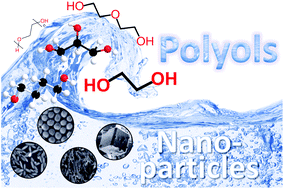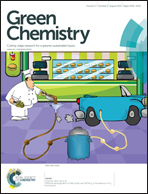Polyol synthesis of nanoparticles: status and options regarding metals, oxides, chalcogenides, and non-metal elements
Abstract
Since the first description by Fievet, Lagier and Figlarz in 1989, the synthesis of nanoparticles in high-boiling, multivalent alcohols – so-called polyols – has been developed into a widely applied strategy, and nowadays belongs to the standard repertoire for preparing high-quality nanomaterials. The polyols take advantage of several features such as: (i) water-comparable solubility of simple metal-salt precursors; (ii) high boiling points (up to 320 °C); (iii) reducing properties for the instantaneous synthesis of metals; (iv) coordinating properties for surface functionalization and colloidal stabilisation of nanoparticles; (v) wide adaptability of the polyols ranging from low-weight ethylene glycol (EG) to high-weight polyethylene glycols (PEGs). This review summarises the status and perspectives on nanoscaled elemental metals, metal oxides, metal chalcogenides, and non-metal elements that were prepared via the polyol synthesis. Moreover, we summarize our results and concepts to expand the limits of the polyol synthesis. This includes strategies for less-noble metal synthesis, phase transfer reactions, photochemical reduction, NMR-based characterisation of polyol-functionalised nanoparticles, realisation of phase-pure and readily crystalline metal tungstates, stabilisation of low-melting elements, and controlled thermal decomposition of polyols to obtain high-quality, lanthanide-modified carbon dots (C-dots).

- This article is part of the themed collections: Green solvents for synthesis and 2015 most accessed Green Chemistry articles

 Please wait while we load your content...
Please wait while we load your content...